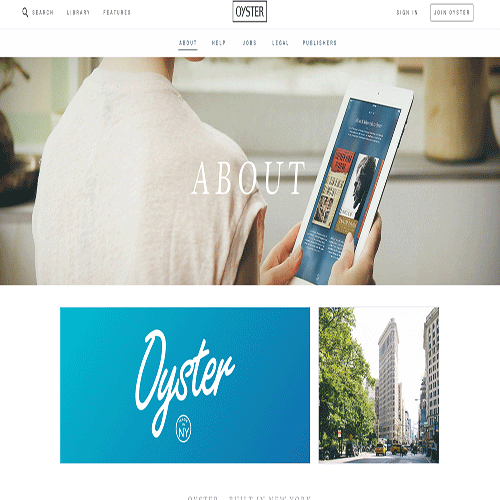We here at Ooligan Press have been watching recent developments in subscription reading services closely. In May, the two largest providers of subscription reading services for trade books—Oyster and Scribd—announced that 10,000 e-books from Simon & Schuster’s backlist would become available to subscribers. Until then, HarperCollins was the only publisher of the big five to offer their content through these services. At that juncture, the viability of recurring revenue models was highly suspect. There is still no guarantee Oyster and Scribd will survive, but the addition of Simon & Schuster has increased the likelihood of success. The fact that two of the five big guys have chosen to offer their content this way suggests subscription models are becoming a mainstream way to read. Let’s more closely examine how the model currently used by Oyster and Scribd works.
Readers can gain total access to Oyster’s content for $9.95/month; Scribd is slightly cheaper at $8.99/month. Once you pay the fee, a massive library of e-books is instantly available through your chosen device. Sounds great, right? Now, neither Oyster and Scribd nor the publishers are giving full disclosure of the exact details of their agreement. They have said that a threshold has been established within a distributed e-book, and if a customer reads past that threshold, Oyster and Scribd will pay the publisher the full list price of the book. The Shatzkin Files reports anywhere from 10 to 40 percent of the e-book must be read before the publisher gets paid. If a majority of users regularly read more than two Simon & Schuster or HarperCollins books in a month, it’s hard to imagine that this model could be sustainable.
Much like gym memberships, subscription reading services employ models that are reliant upon customers not using the service to its full potential. In this case, success is contingent upon a percentage of users never reading titles offered by Simon & Schuster or HarperCollins. This does not necessarily spell failure; the services offer content from many other publishers besides the two big names. Indie e-book publisher Smashwords has partnered with Oyster, citing the potential for author discoverability as the most attractive reason for this partnership. The substantially lower price point of Smashwords titles to that of the big guys makes this partnership beneficial to Oyster, Scribd, and users seeking that kind of content.
The exigent demand these two companies face is to appease all parties involved. The reason that Simon & Schuster’s decision to join in the subscription experiment is so momentous is because it raises the stakes. Two big publishers are well on their way to becoming a crowd. If there are no serious complaints in the next year, you can bet other big names will follow. Yet, entering the game means that risk of failure is much greater. Can Oyster and Scribd find the goldilocks scenario needed to keep publishers and readers happy? To do so, they will need not only to sign up readers, but to sign up the right kind of readers. If millions of users join but never read more than one book past the magical threshold, publishers will lose faith and withdraw. Losing the support of a big publisher will severely reduce whatever social capital the companies may have accrued by this juncture. To complicate their situation further, these companies still have their own well-being to consider. If they sign up too many gluttonous readers, turning a profit will be impossible.
You can bet we will be keeping a close eye on these companies over the next year. The success or failure of this model will play a decisive role in the future of e-books and in the way those in the industry think about and produce content, and that is pretty close to all of our hearts at Ooligan Press.

